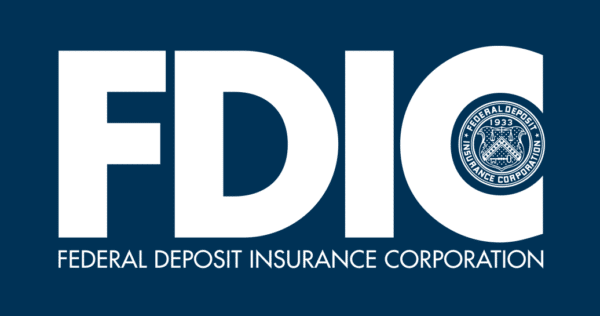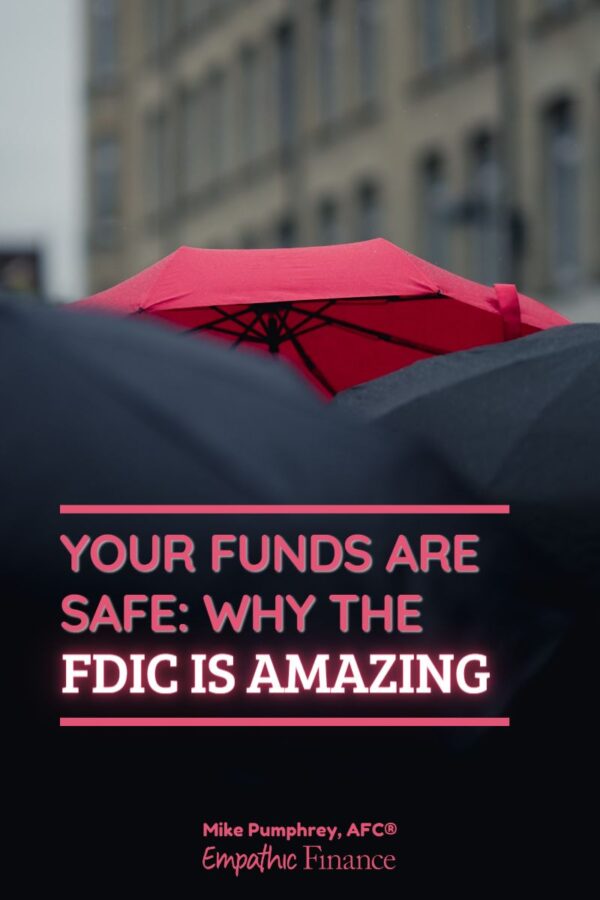A bank run and collapse just reaffirms why the Federal Deposit Insurance Corporation (FDIC) is an amazing benefit to consumers.
So you’ve all probably heard about the recent bank run and subsequent collapse of Silicon Valley Bank, a commercial bank with over $200 billion is assets.
This is big. News sites are already reporting that the bank is the second largest bank failure in U.S. history, second only to the collapse of Washington (Whoo-hoo!) Mutual in 2008.

The events are happening quickly and in real time, so this post may turn out to have some outdated information in it, but the details of the bank aren’t really the important part here.
There are a few amazing aspects to the bank collapse. First is that, with a name like “Silicon Valley Bank”, the bank didn’t fail due to shenanigans or other invented money schemes that you would expect. It actually failed due to a misguided bet on—wait for it—Treasury Bonds.
But the other amazing aspect to this bank collapse is that every person—every single person—who had less than $250,000 in assets in their bank savings and checking accounts, will be getting their money back, completely.
How long will it take? Years? After bankruptcy court? No, according to the FDIC itself, it’s happening today, just one business day after collapse.
And for that, you can thank the Federal Deposit Insurance Corporation.
Otherwise known as the FDIC.
Table of Contents
What is the FDIC?
The FDIC is a government agency that insures consumer bank deposits against the potential of financial institutions failing. It was created in 1933, which you may recall from your history class, was kind of a bad era for banks.

Its purpose was to shore up confidence in the banking system. Because as we’ve seen, it’s panic that leads to many (if not all) of the big bank collapses.
The idea was, if you knew that your money was protected, you and everyone else wouldn’t need to panic and try to withdraw your funds at the same time.
What does the FDIC insure?
The FDIC insures up to $250,000 of customer deposits. But it’s more nuanced than that, because it’s actually $250k “per depositor, per institution and per ownership category“.
This means that if you have $500k split between two different banks, you’re fully covered. Add $250,000 more in a joint account? You’re fully covered. Got $250k more in a trust account? You’re fully covered.
But, let’s be honest, most people don’t have $250,000 in liquid (non-investment) funds sitting around. Because of this, it’s safe to say that almost everyone’s savings and checking accounts are totally insured against loss.
(Quick note: if you are a member of a credit union, the FDIC doesn’t apply to you, but the National Credit Union Administration (NCUA) does, with more or less the same protections.)
And how much does all this cost you?
Nothing. The banks pay this insurance on your behalf.
Has the FDIC ever failed to come through for depositors?
No.
As the FDIC puts it:
“No depositor has ever lost a penny of insured deposits since the FDIC was created in 1933.”
And note that there have been 562 bank failures in this century alone.
Obviously, we can’t predict the future, but after a century of flawless perfection, would you bet against the FDIC? I wouldn’t.
Not all money is subject to risk
Investments carry risk. Variable interest rate debt carries risk. Inflation is its own kind of risk.
But you can rest assured that no matter what kind of sketchy practices your bank is up to, as long as they are FDIC insured, and you’re under the limits, your money is safe.
And that’s amazing.
My heart goes out to all the people who lost money in the Silicon Valley Bank (or who have their funds currently frozen).
But can we also give a shoutout to the FDIC, who has confirmed that everyone who had insured deposits will be able to access their funds one business day after the collapse?



